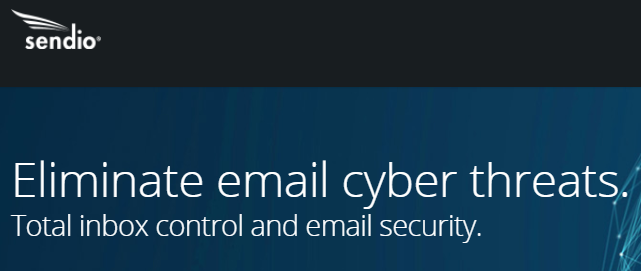Automate using Automate.io and Microsoft Flow

Business today gets done through the technology that connects us. The problem is that no matter what, there will never be one master program that does everything we specifically need. We’re forced into optimizing our work lives through no less than a dozen applications that we ourselves string together. While this is still faster than […]
Stop Ransomware In It’s Tracks

Today we are going to review a brilliant tool that stops ransomware and other spam in its tracks. It’s called Sendio Opt-Inbox, and it’s more than just antivirus and spam filtering; it’s all of that combined with two-factor authentication, meaning that if anyone sends you an email, a human has to verify that they sent that email to […]
Use Technology To Avoid Pesky Salesmen

Technology has driven a wedge into the profession of sales in a way that industry wasn’t prepared to deal with. On the one hand, you rely on it to keep you connected, but on the other hand, you also want it to protect you and keep your life private as well. Salesmen look to utilize […]
The Technical Logistics Of Moving A Company
Are you seeing a move in your company’s future? Even if you’re not actively planning one at this moment, eventually, you may have to move to a new location. As you’re probably well aware, this can be a logistical nightmare. As an IT partner, we work closely with our clients every time they have to move. We want to […]
Use Date and Time Functions in Microsoft Excel 2016
In today’s video, we are going to show you how to work with dates and times in Microsoft Excel 2016. First, we will show you the logic that Excel uses to calculate dates, and then we will show you how you can work with this logic. It is useful to understand that Excel sees dates […]
PCI Compliance Audits
Have you ever been audited for PCI compliance? If not, it is most likely that at some point you will be. In order to maintain the ability to process payments electronically, this will be a fact of life. The more transactions you process in a year, the more often you will be getting a visit […]
How to prepare for ransomware
Lately, there has been a lot of talk about ransomware: a type of computer virus that encrypts your files and holds them for ransom. Worse yet, there is no guarantee that your data will be released if you pay the ransom fee. In light of the most recent ransomware attack called “WannaCry” that infected a substantial number of […]
Set up and switch between user accounts in Windows 10
If you have more than one user account on your computer you will soon realize the frustration of trying to log into your account only to find that your password doesn’t work. Usually, this is caused by the user unknowingly trying to log into the wrong account. This is a simple but common mistake that […]
Scam Email and Phishing Attempts
As an IT support company, we are always telling our friends and clients to be cautious with what they click on or whom they give personal information to. Most people know to avoid giving money to a Nigerian price, but scams and phishing attempts are becoming more advanced every day. Many scam emails disguise themselves as people […]
Microsoft Outlook 2016 – How to create an email signature
Everyone needs an automatic signature in their email. Setting one up is a simple process if you follow the steps in this how-to video. Generally, an email signature is made up of your name, job title, company name, phone number(s), extension, website, and reply email address. The important thing to consider is how much information […]





